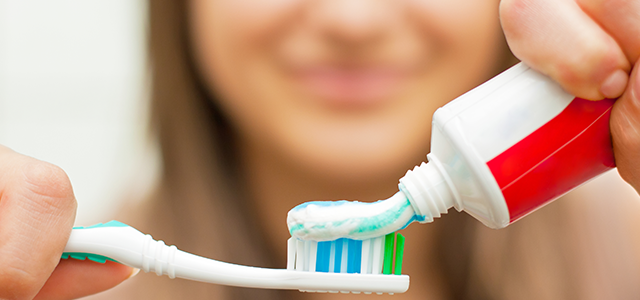
When was the last time you read the ingredient list of your favorite toothpaste brand? Actually, have you ever read the ingredient list? If you’re like most Americans, you’ve become an ingredient-list-reading crazy person these last few years, and it would be wise to add that toothpaste label to your list of reading materials. So, let’s explore the most common ingredients, learn a bit about how they function, and help you make the personal choice whether to avoid any or not.
Sodium Lauryl Sulfate (SLS)
Of all the ingredients that make their way into toothpaste, if there’s one you may be familiar with, it’s likely Sodium Lauryl Sulfate. It’s used in toothpaste mainly as a foaming agent, to give you the sense that your brushing is having the effect it should. Some argue it’s an unnecessary ingredient given that it’s prone to irritate the oral tissues of some, and can contribute to the formation of canker sores. More dubious, however, is the claim that SLS is a carcinogen. And, while The American Cancer Society and the federal government do not consider SLS to be a carcinogen, there are some scientists who believe more testing is necessary, and that consumers should avoid the ingredient if possible. If you’re at all concerned, the decision to avoid SLS is yours – not all toothpastes contain the ingredient.Flavorings
Making toothpaste taste good isn’t a simple task. And trust us, you want that stuff to be palatable! Flavor additives are often oils/extracts/flavorings such as cinnamon, anise and mint, but can be synthetic (aspartame, for example.) Most would prefer a natural flavoring, but recognize that in some people these additives can cause irritation to oral tissues, and mint for some is a heartburn trigger. If you suspect your toothpaste is the cause of any mouth irritation you may be experiencing, play around with different flavored toothpastes till you find what works best for you.
Dyes and Colorings
It’s not really that necessary to have colored toothpaste. So, if you’d like to avoid things like colors followed by numbers like Blue #2, just say no to additional colors. These too can be irritants to some individuals.Fluoride
Fluoride! You need it, you want it. Make sure your toothpaste has it. Fluoride works by strengthening tooth enamel and making teeth more resistant to acid attacks from plaque, bacteria and sugars in the mouth. Some of us may even require fluoride supplementation.Alcohol
Alcohol dries out your mouth, and your mouth doesn’t enjoy that feeling very much. It can contribute to gingivitis, and generally doesn’t leave you feeling as fresh as you’d like. So, why use toothpaste with alcohol?Triclosan
The jury is still out on Triclosan. Only Colgate Total contains it – and it’s used (very effectively) as an antibacterial agent to fight gingivitis. Some researchers, however, contend it needs more recent and continued study given its questionable relationship with cancer. Measuring risk vs. benefit is always yours to consider. Here is what some in the scientific community are saying about Triclosan.Abrasives
Silica, along with Baking soda, calcium carbonate, calcium phosphates and alumina, are abrasive agents used to remove stains from teeth. If you’re a frequent coffee, tea, red wine, or soda drinker, you might feel the need to brush with a toothpaste containing these ingredients. Recognize, however, that they are abrasive to your teeth. Go with toothpaste with a low rating for abrasiveness. Or, reduce the quantity of your stain-inducing foods and beverages. Also, we’re going to assume that you’re not a smoker – which really stains teeth!Humectants
Keeping toothpaste moist and in good form requires a humectant. Otherwise, you’d end up with a hard block of toothpaste or a chalky mess. Glycerin, sorbitol and water are the most common additives to your toothpaste to get this job done, and wonder-ingredient Xylitol has also been making an appearance as of late because it not only provides moisture but helps fight cavities.Thickeners
Carrageenan, cellulose gum, guar gum, xanthan gum, and even gluten help thicken your toothpaste. They’re generally benign ingredients, though if you have celiac disease or if gluten is a concern for you, you’ll want to check out this list of gluten-free toothpastes.Preservatives
The last thing you want to be spreading all over your teeth is moldy toothpaste. Sodium benzoate, methyl paraben, and ethyl paraben are the three most common preservative ingredients used to keep your toothpaste from become home to all sorts of nasty bacteria. They’re a bit of a necessary evil. Of the three, sodium benzoate may be your best choice as parabens have come under intense scrutiny – particularly because they mimic estrogen in the body, according to the Breast Cancer Fund.So, as you can see, there’s a lot that goes into your toothpaste! Do your own homework, so you can make the decisions that are right for you and your family. And, brush those teeth!
